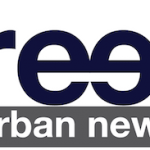Summer vacation is the most anticipated time in the life of a student; nothing trumps summer fun in the sun. Despite the options available to the student, extended time away from school is always a joyous occasion. Although this time is traditionally spent securing much needed rejuvenation before for the upcoming school year; it should also encompass time to mentally prepare for the awaiting challenges that come along with it, because academic retention is at stake.
Throughout the course of the summer months, on average, students lose approximately one month of knowledge (Know the facts, 2009), The socioeconomic status of the student also impacts academic retention during this time, as low-income students fall behind by approximately two months in reading compared to their middle and upper-income peers who, on average, make slight gains (Know the facts, 2009). Think of academic retention in relation to the physical condition and endurance of a professional athlete. During the season, the athlete is in superior shape, as a result of being consistently engaged in the rigor of the sport. However, throughout the off-season, daily exercise and conditioning are of great importance; failure to do so will leave the athlete out of shape and unprepared for the next season. Such is the case with academic retention, in order to maintain one’s present level of functioning, as well as experience growth, regular mental exercise and conditioning are essential throughout the summer months.
One of the best forms of mental exercise is reading. Daily reading allows students to remain competitive with their peers. By 2020, citizens who fully participate in the workplace will need to have powerful literacy abilities, which historically, have only been achieved by a small percentage of the American population (Reading, 2012). Therefore, engaging in grade level reading will not only positively impact the student’s academic retention, develop the student’s knowledge base, but provide a secured position in the workplace of the future.
The 1970’s popularized the phrase, “Reading is Fundamental”, from the nation’s largest non-profit literacy organization, and the statement still bellows truth to date. Regular engagement in written material, allows students to think critically as they read and engage in the process of conceptualizing and rationalizing information. Not to mention, reading contributes to a thriving imagination, as students are able to gather and visualize information from the text. All of which are skills needed to excel in school and a rapidly evolving society.
Reading has a strong correlation with writing. Successful writing can effectively convey the thoughts and opinions of the author to an awaiting audience. Reading also provides a model for the developing writer. Being engulfed daily, in published works where successful writing is being digested, provides a format for the student as she/he takes on the task of writing. Thus, the more the student reads, the more they will in turn, write, leading to higher literacy levels in school.
Looking at the entire picture, though equating reading with academic success is factual, it is an area where students in urban school settings struggle. By the fifth grade, low-income students can be, on average, 2-1/2 years behind in reading than their more affluent peers, which correlate with their academic loss during the summer months (Johnson& Matthews, 2009).
As students matriculate through school, less than 20% of Black and Hispanic students enter high school reading at a proficient level; which provides an understanding of the devastating number of drop-out students in urban communities. But the avenue to change such statistics is available; securing grade level books of interest and engaging in that material daily for at least 15 minutes will introduce students to approximately one million words of text annually; thus promoting change (Reading, 2012).
Investing in reading is an activity that will positively impact the self-esteem, present level of performance–regardless of the level, and prove to be an essential tool that the individual can feel confident. With the start of the new academic year rapidly approaching, the ability to continue to grow and succeed is optimal; invest in reading today, for tomorrow relies upon it.
By: Da’Vet Williams, Educator and Social Commentator
Johnson, J., Matthews, A. (2009, May 29). National center for summer learning urges schools to use American recovery and reinvestment dollars on innovative summer learning programs. Headlines @ Hopskins. Retrieved from:http://www.jhu.edu/news_info/news/home09/may09/summer_slide.html
Know the facts. (2009). National Summer Learning Association. Retrieved from:
http://www.summerlearning.org/?page=know_the_facts
Reading, literacy, and education statistics. (2012) The Literacy Company. Retrieved from: http://www.readfaster.com/education_stats.asp






